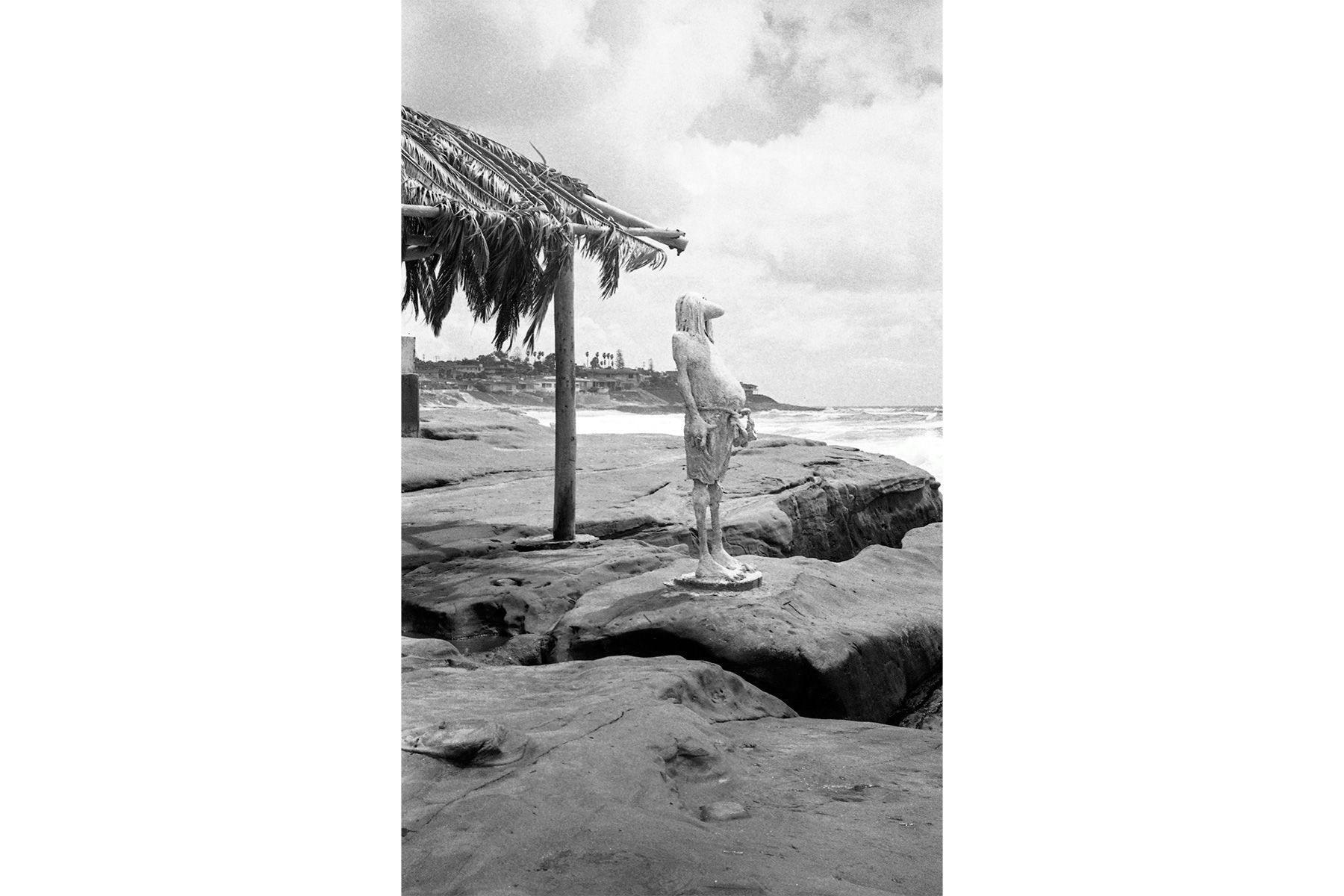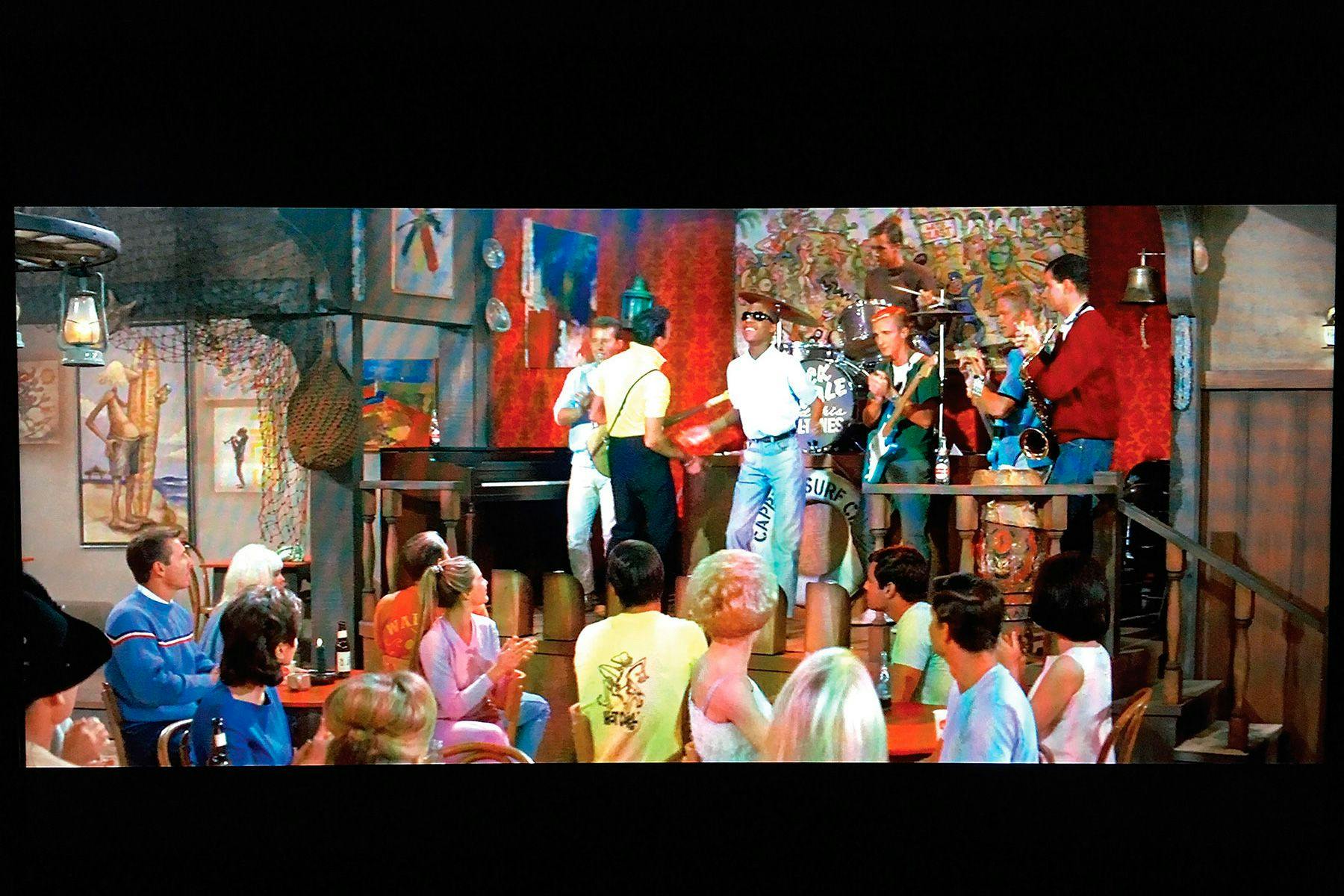Surf cultureThe Legend of Hot Curl

In the summer of 1963 a six-foot-tall, 400-pound reinforced concrete statue of a pot-bellied surfer, with a rope belt holding up his baggies and whose only facial feature was a rather large nose protruding from a mop of shoulder-length hair, appeared on the rocks alongside the famous thatched palapa at Windansea Beach in the San Diego community of La Jolla. The name of this character was Hot Curl, and it was the creation of San Diegan beatnik artist Michael Dormer and his partner Lee Teacher. Hot Curl became one of the icons of the “Kustom Kulture” and Lowbrow Art movement centered around the surf and hot-rod counter culture of early 60s California, alongside Rick Griffin’s Murphy character and Ed “Big Daddy” Roth’s Rat Fink.

Hot Curl started life as the second character in a comic strip in Michael Dormer’s 1959 self-published ‘zine The Scavenger, a beatnik anthology of poetry, short essays, drawings and cartoons. Dormer had trained as a fine artist, produced illustrations as a commercial artist for men’s magazines, and spent time in San Francisco with Beat Generation icons Lawrence Ferlinghetti (co-founder of the City Lights book store) and Allen Ginsburg before returning home to San Diego in 1958, aged 23 and starting The Scavenger. Hot Curl developed out of this comic strip, outgrowing and leaving behind the lead character and being given more than one-word lines, and became a regular comic strip in the La Jolla Light local newspaper for the next eleven years. This all happened just as surfing was about to explode from the pastime of a few thousand coastal devotees into a mainstream teen pop-culture sensation triggered, amongst other things, by the release of the Gidget movie.

By the time Hot Curl appeared on the rocks with a can of beer in his hand at Windansea the character was already a counter-culture icon. City officials labeled the heavy and somewhat precarious looking installation a health hazard and had it removed, however the local community objected and it was reinstated (although this time it was properly anchored to the rocks). A few months later Hot Curl was decapitated (reportedly by members of a rival surf club), although subsequent statues replaced it until it was destroyed once and for all during a severe storm that left Hot Curls feet on the rocks, with just some short sections of steel rebar where his legs had once been.

It would take more than surf club rivalry and powerful storm swells to destroy Hot Curl, however; Toymaker MPC began producing a plastic model kit of the character, and then in late 1963 the production company responsible for the movies asked Dormer if Hot Curl could feature in their latest movie, Muscle Beach Party. Dormer produced a semi-animated Hot Curl sequence a mural for the opening credits, and Hot Curl is referenced throughout on t-shirts,hats, posters and in a (second) large mural produced by Dormer that provided the backdrop to the stage in the club where Dick Dale and the Deltones performed with a young Stevie Wonder.

Dormer continued to create both low and highbrow art, developing an aluminium sculptural painting technique that he continued to employ until his passing in 2012, as well as producing cartoons for Peterson Publications’ SURFtoons and CARtoons magazines and the 1966-67 Shrimpenstein television show that he created with Hot Curl collaborator Lee Teacher. Hot Curl continued to appear in print, finally featuring in Surfer Magazine in 2007 in a series of cartoons making comment on the state of modern surf culture.

Michael Dormer’s comics and art are celebrated in a 200 page hardcover retrospective published by Fantagraphics, published this month.